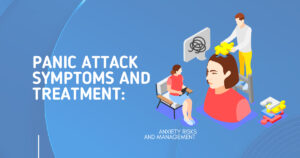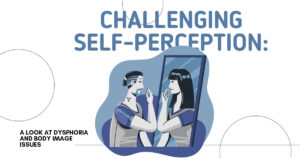It’s normal to wonder or question – is OCD is a form of autism. The two are different mental health conditions. However, the symptoms are very similar when looking at OCD vs. autism. Some symptoms of autism can also overlap with other disorders, including OCD. The same is valid with autism and other mental health conditions, like anxiety disorders, including social anxiety and panic attacks. But is OCD a form of Autism?
What Is OCD?
Obsessive-compulsive disorder or OCD is a mental health condition affecting people of all ages. A person with OCD will find themself in a cycle of obsessions and compulsions.
- An obsession is an unwanted and intrusive thought or an urge or image.
- When you experience an obsession, it’s very distressing for you.
- Compulsions are behaviors you might engage in to eliminate the obsession or reduce your distress.
- It’s common to experience obsessive thoughts or compulsive behaviors at some point in your life. That doesn’t mean you have OCD.
To diagnose OCD, a mental health care provider will ask about particular symptoms and the frequency at which you experience them.
The cycle of obsessions and compulsions has to be extreme to the point it’s affecting other activities in your life. Your functionality is affected by OCD.
Understanding Obsessions
An obsession in OCD can be a thought, image, or impulse. These occur repeatedly, and they’re out of your control. When you have OCD, you don’t want to experience the thoughts. They’re disturbing to you.
- Obsessions come with common symptoms like fear and disgust.
- Obsessions are time-consuming, and they take up time that you might otherwise dedicate to things in your daily life, as is the case with symptoms of many diagnosable mental disorders.
- Most people will experience intrusive, unwanted thoughts from time to time.
- With OCD, the thoughts occur often.
- They trigger extreme anxiety, and again, it’s the impact on daily functioning that separates OCD from “normal” obsessive thoughts.
Common obsessions in this psychiatric disorder include thoughts about contamination, unwanted sexual thoughts, fears of losing control, and religious obsessions.
Some obsessions relate to harm, like a fear of being responsible for something terrible happening. Some people with OCD have obsessions that relate to perfectionism. For example, you might have extreme worries about things being just right.
OCD is a mental illness that may occur with other co-occurring disorders, including substance abuse, depressive disorders, or other mood disorders.
Mental Health Center of San Diego
Understanding Compulsions
Compulsions are the second element of diagnosable OCD. Compulsions are behaviors you repeat. You repeat these behaviors to try and counteract or neutralize your obsessions or perhaps make them go away.
You may realize it’s only a temporary coping mechanism, but it’s your form of escape nonetheless.
Compulsions include washing and cleaning, checking things repeatedly, or mental compulsions like reviewing events to prevent harm.
What is Autism?
Autism is a lifelong developmental disability, with symptoms most often appearing during early childhood. Autism is a spectrum condition that can affect your communication, self-regulation, relationships, and social skills. A spectrum condition affects people differently and to varying degrees.
There isn’t one single known cause of autism. Early diagnosis does help someone with autism get support services.
Autism spectrum disorder has many subtypes.
There are many symptoms. For example, people with autism may have trouble understanding feelings or avoid eye contact. Autistic children might have selective mutism or similar patterns of behavior.
An autistic person may have trouble relating to others, following social rules, or engaging with other people.
People tend to compare OCD vs. autism because autism can also include repetitive behaviors.
Mental Health Center of San Diego
Repetitive Behaviors in Autism
Repetitive behaviors can fall into one of two categories. There are lower-order repetitive behaviors. Then, there are higher-order repetitive behaviors.
Lower-order behaviors include fidgeting, body rocking, or hand-flapping. Vocalization, like repeating specific phrases, is also a lower-order behavior.
Higher-order repetitive behaviors include routines and rituals, highly-focused interests, and sameness. Repetitive behaviors tend to be the first signs of autism emerging in young children.
There’s also a term—stimming—relevant to repetitive behaviors in autism.
Stimming is a subcategory of repetitive movements. Stimming is short for self-stimulatory behavior.

OCD vs. Autism: Is OCD a form of Autism?
So Is OCD a form of Autism? OCD and autism can look similar to one another. The similarities include obsessive and repetitive behaviors. Severe anxiety can be a characteristic of both. People with OCD and autism also share rigidity and resistance to change.
When comparing OCD vs. autism, the primary difference is the motivation for these similar behaviors.
- In autistic people, repetition might occur to soothe anxiety.
- Adults with an autism diagnosis often say their repetitive actions give them feelings of control.
- If you were a parent and your child was lining up their cars, for example, this could seem like OCD. However, the motives are part of a complex mental process.
- There is no logical thought process behind why these activities need to happen in kids with autism.
- In OCD, however, you may realize you aren’t being reasonable, but you feel your actions are purposeful. In autism, there’s usually no purpose behind a particular activity.
- With autism, behaviors might feel good with no reason for why they do.
Another example of a difference is that in autism if you interrupt repetitive behaviors, it won’t usually lead to distress if you interrupt repetitive behaviors. However, if you stop someone with OCD from engaging in their repetitive behaviors, it could cause them a high level of anxiety.
- To sum up the differences in OCD symptoms and autism, we can say people with OCD feel uncomfortable and experience distress because of their symptoms and unhealthy patterns.
- Someone with OCD wants their symptoms to end.
- People with ASD usually don’t feel distressed or bothered by their obsessions. People with autism may even embrace their obsessions.
- Someone with an autism spectrum disorder will also have other social, cognitive, and language differences that someone with OCD doesn’t have.
Treating These Mental Health Conditions
Professionals may treat the repetitive behaviors in both OCD and ASD similarly. For example, medication and behavioral therapy with a clinical psychologist can be treatment options after an initial diagnosis. As part of a treatment plan, the medicines most often given are selective serotonin reuptake inhibitors or SSRIs.
There isn’t a cure for either condition, but treatment can get symptoms under control. So the question comes up again, is OCD a form of Autism? Typically OCD is more treatable than autism. Depending on the severity of OCD, you might need long-term or intensive treatment.
For OCD, psychotherapy tends to be very effective. Exposure and response prevention or ERP is a subset of CBT often used for OCD. In ERP, you work with a therapist, and during that time, you are exposed gradually to an object you fear or an obsession. You then learn ways to avoid compulsive rituals in response to that exposure.
You could treat OCD with a plan that includes intensive outpatient and residential treatment, depending on the severity of symptoms or the impairment of functionality.
Mental Health Center of San Diego
Connecting with OCD Counselors Near Me
If you’re looking for a counselor specializing in OCD symptoms and proper treatment, please contact the Mental Health Center of San Diego by calling (858) 258-9883 to learn more. Effective treatments like cognitive-behavioral therapy can improve your quality of life, reduce obsessive behaviors and help you feel more in control of your symptoms.









